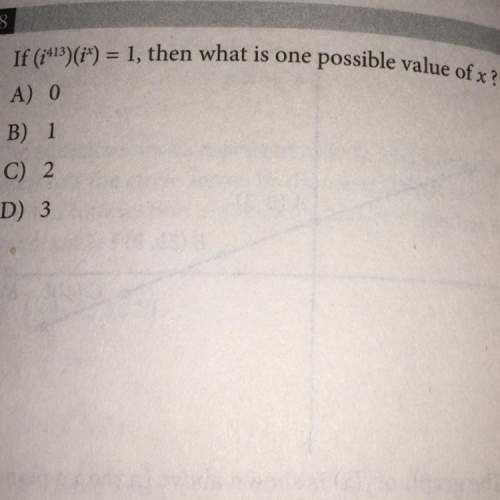
Mathematics, 11.06.2020 02:57 silvajimena74
The manufacturer of a smart watch claims that individuals who pay attention to how many steps they take per day will inadvertently take more steps per day than individuals who pay no attention to how many steps they take per day. To investigate this claim, the manufacturer conducts a study to estimate the difference in the mean number of steps taken by those that pay attention to how many steps they take per day and those that do not. To do so, 40 volunteers are recruited. Half of the volunteers are randomly assigned to receive a smart watch and are taught how to use it to track their steps. The other half of the volunteers are given a wristband to wear, but are not informed that the wristband is tracking their steps. The volunteers are monitored for 30 days. The mean and standard deviation of the number of steps taken per day are computed for each group. Here are the data:
Payti
Do not pay itin 01 0 10 20 87 64 82 350
Which of the following is a 99% confidence interval for the difference in the mean number of steps taken by all people like these that do and do not pay attention to the number of steps they take per day using df - 192
(A) 1596 + 2.861/15802 + 23502
(B) 1596 +2.861, 15.302 – 23502
(C) 1596 +2.576,15802 + 23502
(D) 1596 + 2.576 ( 15802 + 23502) °
(E) 1596 + 2.576 ( 15892 – 23502)

Answers: 2


Another question on Mathematics

Mathematics, 21.06.2019 15:40
In what form is the following linear equation written y=9x+2
Answers: 1

Mathematics, 21.06.2019 19:00
What will the graph look like for a system of equations that has no solution? a. the lines will be perpendicular. b. the lines will cross at one point. c. both equations will form the same line. d. the lines will be parallel.
Answers: 1


Mathematics, 21.06.2019 21:30
In a test for esp (extrasensory perception), the experimenter looks at cards that are hidden from the subject. each card contains either a star, a circle, a wave, a cross or a square.(five shapes) as the experimenter looks at each of 20 cards in turn, the subject names the shape on the card. when the esp study described above discovers a subject whose performance appears to be better than guessing, the study continues at greater length. the experimenter looks at many cards bearing one of five shapes (star, square, circle, wave, and cross) in an order determined by random numbers. the subject cannot see the experimenter as he looks at each card in turn, in order to avoid any possible nonverbal clues. the answers of a subject who does not have esp should be independent observations, each with probability 1/5 of success. we record 1000 attempts. which of the following assumptions must be met in order to solve this problem? it's reasonable to assume normality 0.8(1000), 0.2(1000)%30 approximately normal 0.8(1000), 0.2(1000)% 10 approximately normal srs it is reasonable to assume the total number of cards is over 10,000 it is reasonable to assume the total number of cards is over 1000
Answers: 1
You know the right answer?
The manufacturer of a smart watch claims that individuals who pay attention to how many steps they t...
Questions



Mathematics, 13.04.2022 17:40

History, 13.04.2022 17:40

Mathematics, 13.04.2022 17:40




Social Studies, 13.04.2022 18:00







Social Studies, 13.04.2022 18:30




Social Studies, 13.04.2022 18:40













